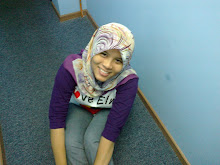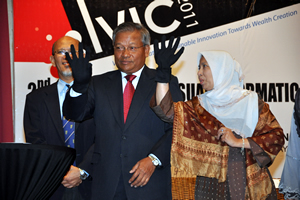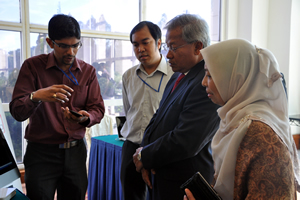LEARNING OUTCOMES
6.1. Describe the broad levels, formats, and granularities of information
6.2. Differentiate between transactional and analytical information
6.3. List, describe, and provide an example of each of the five characteristics of high
quality information
6.4. Assess the impact of low quality information on an organization and the benefits
of high quality information an organization
THE BUSINESS BENEFITS OF HIGH-QUALITY INFORMATION
Information is powerful. Information can tell an organization how its current operations are performing and help it estimate and strategize about how future operation might perform. Remember that new perspectives and opportunities can open up when you have the right data that you can turn into information and ultimately business intelligence.
Information is everywhere in an organization. Managers in sales, marketing, human resources, and management need information to run their departments and make daily decisions. Organizational information comes at different levels in different formats and “ granularities “. Information granularity refers to the extent of detail within the information ( fine and detailed or coarse and abstract ). For example, a company might be collecting information from various suppliers to make needed decisions, only to find that the information is in different levels, formats, and granularities.
THE VALUE OF TRANSACTIONAL
AND ANALYTICAL INFORMATION
TRANSACTIONAL INFORMATION
There are hundreds of transactions that go through organizations every day. The result of these transactions is transactional information. Transactional information is all the information contained within a business unit. The primary purpose of transactional information is to support day-to-day operations of the unit. Examples of transactional information include: sales receipt, packing slip, purchase confirmation, etc. So transactional information is the result of performing daily operating tasks. In addition, every time a cash register rings up a sale, a deposit or withdrawal is made from an ATM, or a receipt is given at the gas pump, capturing and storing of the transactional information are required.
Databases that can handle transactions are known as transactional databases. The main purpose of a database is to ensure accuracy and integrity of information.
ANALYTICAL INFORMATION
In contrast to transactional information, analytical information is used for managerial analysis decision making. People who are higher up in the hierarchy of the company usually do not need all the details of transactional information. They need the bigger picture. Here is where analytical information is used. An example of analytical information is used. An example of analytical information is a report on monthly sales.
Examples of analytical information
ü Trends ( information about where the particular market is heading and if the organization should follow the trend)
ü Sales ( information about if the organization needs to pick up sales in a particular area or if it should cut back on inventory of specific products)
ü Future growth projections ( information about whether or not the company looks like it will grow, usually if it is taking on a new venture)
THE VALUE OF TIMELY INFORMATION
· Timeliness is an aspect of information that depends on the situation :
Ø Real-time information – immediate, up-to-date information
Ø Real-time system – provides real-time information in responses to query requests
· Business decisions are only as good as the quality of the information used to make the decisions.
· You never want to find yourself using to help you make a bad decision faster.
THE VALUE OF QUALITY INFORMATION
· Characteristics of high-quality information include:
- Five characteristics of high quality information are accuracy, completeness, consistency, uniqueness, and timeliness.
- Information needs to be of high quality to be useful and accurate. The information that is input into a data base is presumed to be perfect as well as accurate. The information that is accessed is deemed reliable.
- Completeness is another attribute of high quality information. Completeness is as necessary as accuracy when inputting data into a database.
- Consistency is key when entering information into a database. For example, with a column for a phone number entry 10 digits is the expected length of the field. Once the fields have been set in the database, a number more or less than 10 digits will not be accepted. The same applies for any field, whether it is an entry that requires a number, a series of numbers, an address, or a name, etc. If the fields are not set to a specific limit for information then consistency is even more important.
- Uniqueness is the fourth component of high quality information. In order to add value to any organization, information must be unique and distinctive. Information is a very essential part of any organization and if used properly can make a company competitive or can keep a company competitive.
- A fifth important aspect of information is timeliness. New and current data is more valuable to organizations than old outdated information. Especially now, in this era of high technological advances, out-of-date information can keep a company from achieving their goals or from surviving in a competitive arena. Real-time information is an element of timeliness.
UNDERSTANDING THE COSTS OF POOR INFORMATION
• The four primary sources of low quality information include:
1. Online customers intentionally enter inaccurate information to protect their privacy
2. Information from different systems have different entry standards and formats
3. Call center operators enter abbreviated or erroneous information by accident or to save time
4. Third party and external information contains inconsistencies, inaccuracies
· Bad information can cause serious business ramifications such as :
1. Loss Of Managerial Control
2. Hidden Cost
3. Threat to Security and Confidentiality
4. Quality problems
5. Tied to the Financial Well-Being of Another Company
6. Bad publicity
UNDERSTANDING THE BENEFITS OF GOOD INFORMATION
Why is Information Technology Important
All our work related applications are now completely automated, thanks to the IT sector. IT professionals are people involved in essential management of sensitive data, exclusive computer networking and systems-engineering. The advancement of the IT sector has resulted in automated:
All our work related applications are now completely automated, thanks to the IT sector. IT professionals are people involved in essential management of sensitive data, exclusive computer networking and systems-engineering. The advancement of the IT sector has resulted in automated:
- Administration of entire systems.
- Production and manipulation of sensitive information.
- Cultural development and communication.
- Streamlining of business processes and timely upgrades.
Advantages of Information Technology
• Globalization
True globalization has come about only via this automated system. The creation of one interdependent system helps us to share information and end linguistic barriers across the continents. The collapse of geographic boundaries has made the world a 'global village'. The technology has not only made communication cheaper, but also possible much quicker and round the clock. The wonders of text messages email and auto-response, backed by computer security applications, have opened up scope for direct communication.
• Cost-effective
Computerized, internet business processes have made many businesses turn to the Internet for increased productivity, greater profitability, clutter free working conditions and global clientèle. It is mainly due to the IT industry that businesses have been able to make their processes more streamlined, thereby becoming more cost-effective and consequently more profitable. People are able to operate their businesses 24x7, even from remote locations only due to the advent of information technology.
• Globalization
True globalization has come about only via this automated system. The creation of one interdependent system helps us to share information and end linguistic barriers across the continents. The collapse of geographic boundaries has made the world a 'global village'. The technology has not only made communication cheaper, but also possible much quicker and round the clock. The wonders of text messages email and auto-response, backed by computer security applications, have opened up scope for direct communication.
• Cost-effective
Computerized, internet business processes have made many businesses turn to the Internet for increased productivity, greater profitability, clutter free working conditions and global clientèle. It is mainly due to the IT industry that businesses have been able to make their processes more streamlined, thereby becoming more cost-effective and consequently more profitable. People are able to operate their businesses 24x7, even from remote locations only due to the advent of information technology.
• Communication
Quick and effective communication is vital to any business anywhere in the world. Information technology gives an entrepreneur or business the tools, like email, video conferencing, SMS, etc., essential to communicate efficiently and effectively. to the business world, and information technology gives your company the resources it needs to communicate quickly and effectively. Not only do people connect faster with the help of information technology, but they are also able to identify like-minded individuals and extend help, while strengthening ties.
• Storing and Protecting Information
IT provides a low-cost business options to store and maintain information that may be important from a business or service point of view. Virtual vaults and other such security systems not only store vital data but also allow control over the access to such information. IT security systems will also protect virtual data from being hacked or wiped out in case of any technical failure.
• Creation of New Jobs
One of the biggest advantages of IT has been the creation of a whole new field of opportunity for skilled personnel leading to new and interesting jobs. Hardware and software developers, computer programmers, web designers, system analyst, the list of new jobs created could go on. IT has also been attributed to be the major cause of surge in the economies of certain Third World nations too.
REFERENCES
Baltzan, Business Driven Information Systems, The McGraw-Hill Companies, 2009, New York.
http://operationstech.about.com/od/outsourcing/tp/OutSrcDisadv.htm
quizlet.com/.../chapter-6-7-valuing-organizational-information-storin...
sites.google.com
http://www.buzzle.com/articles/advantages-of-information-technology.html













